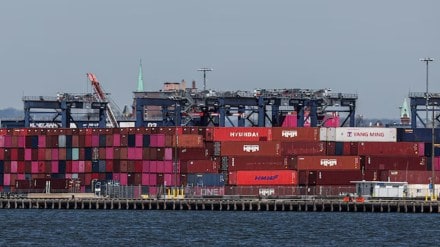Seeking to speed up the negotiations on the free trade agreement with the European Union, a team of officials from the Ministry of Commerce left or Brussels late Tuesday to take forward the process where it was left off last week.
The visit of the Indian team led by the chief negotiator of the India-EU FTA comes within a week of the conclusion of the 11th round of negotiations on the agreement. The 11th round of negotiations were held in New Delhi and lasted from May 12 to May 16.
While both sides are working with a deadline of 2025-end for the conclusion of the negotiations, the possibility to have the agreement in two tranches is also being looked at by both sides.
Buoyed by the completion of negotiations on the full scale FTA with the UK, India wants to sew up as many trade deals as possible this year. Commerce and Industry Minister Piyush Goyal and Indian negotiators are currently in Washington to expedite the conclusion of India-US Bilateral Trade Agreement (BTA).
The negotiations in tranches will allow faster implementation of trade liberalisation in areas where there are least differences. In next phases more contentious issues can be taken up.
To give push to India-EU negotiations commerce and Industry Minister Piyush Goyal had visited Brussels in the first week of this month where he met his counterpart commissioner for trade and economic security of European Commission Maros Sefcovic. In the meeting greater opening up of the markets and not letting reducing Non Tariff Barriers (NTB) was discussed.
India and the EU began negotiations on the FTA in June 2022. The FTA has 23 chapters or policy areas. The key chapters dealing with core trade issues are trade in goods and services, rules of origin, customs, technical barriers to trade, trade remedies and dispute settlements.
The agreement also has to cover areas like government procurement, intellectual property, competition, merger control and subsidies, transparency and good regulatory practices and sustainable food systems which can be taken up later.
In the 10th round for the first time sectoral sessions took place looking at specific industries such as automobiles and medical devices. The issues around tariffs and rules of origin in the industry sectors were also discussed.
The key ask for India from the EU in its negotiations is zero tariffs on labour intensive exports and greater access to the services market of 27-member grouping. The EU is pushing for India to cut tariffs on cheese and skimmed milk powder, which India currently shields through high duties to protect its domestic dairy industry. Indian officials say that they would be unwilling to provide concessions in dairy in any of the FTAs. Even in the UK FTA dairy has been kept out.
European winemakers are pushing for greater access to the Indian market, where imported wines currently face a 150% tariff. The EU wants India to eliminate or significantly reduce these duties to 30-40% levels. India may like to match what it offered to Australia under the ECTA, where tariffs on Australian wines were slashed to 50% in 10 years, according to a GTRI report.
European car manufacturers want India to cut import duties on completely built-up (CBU) vehicles to 10-20%, down from the current 70%. The EU already exports over $2 billion worth of automobiles and auto parts to India annually, with most arriving in completely knocked-down (CKD) form, which face a 15% tariff when assembled locally.
The EU is an important trading partner for India. In April-February of last financial year India’s exports to the EU stood at $ 69 billion while imports were $ 54.6 billion dollars.
